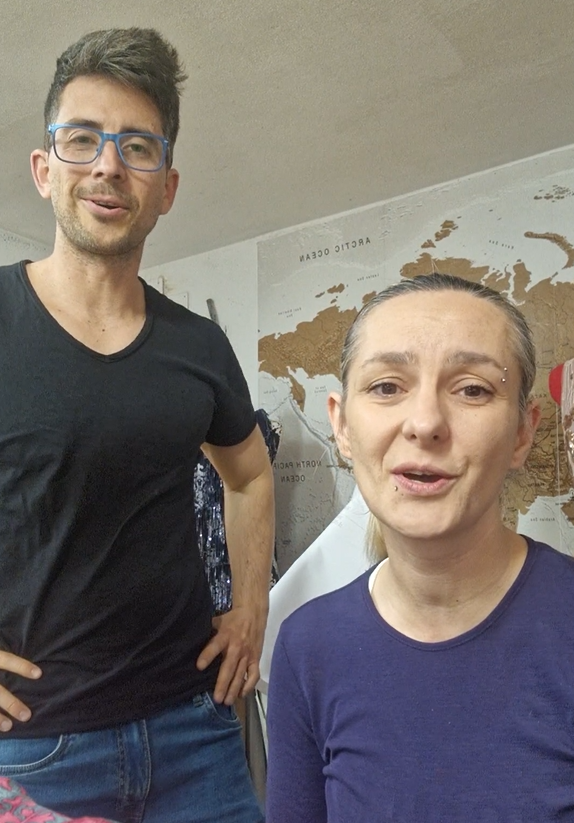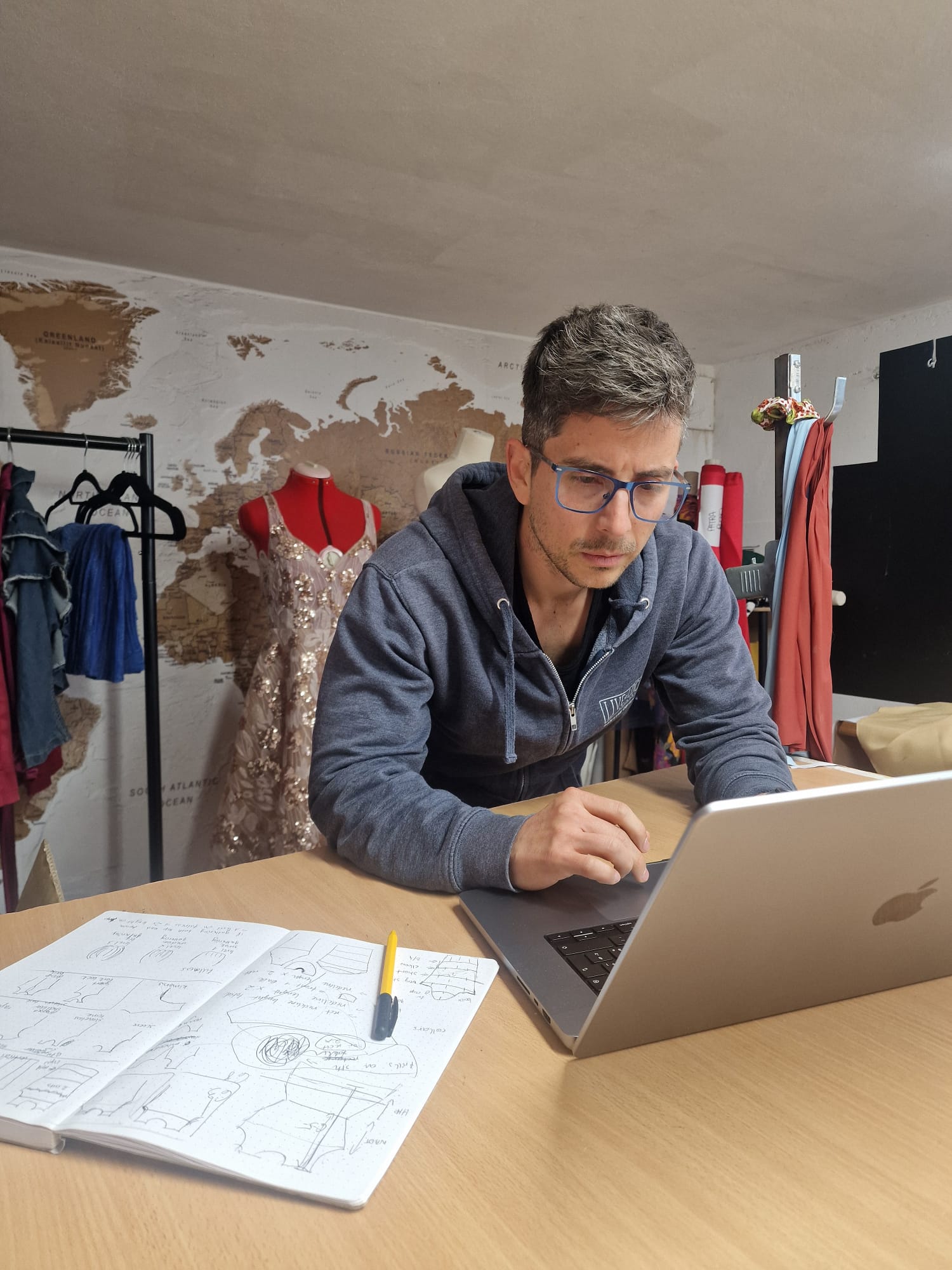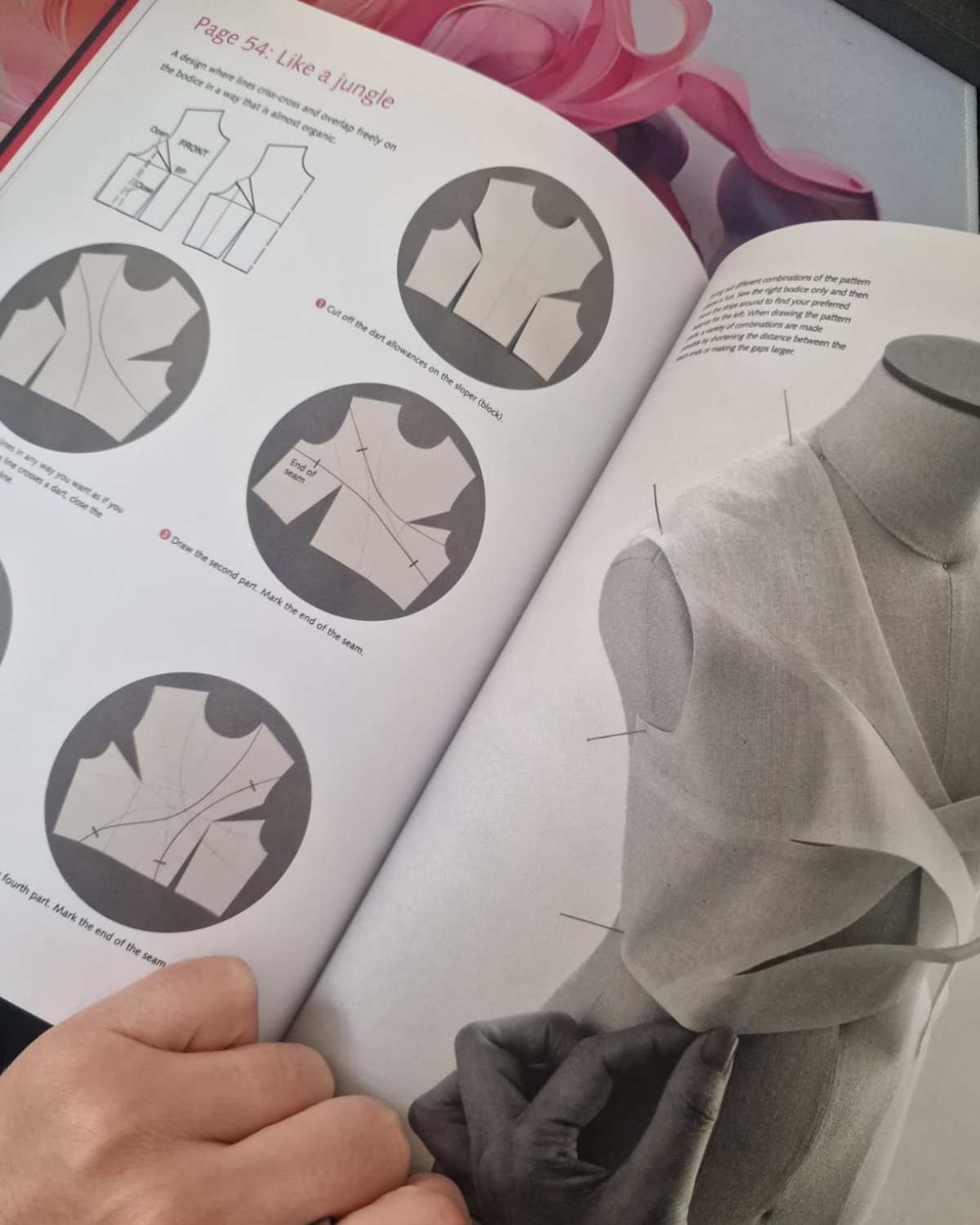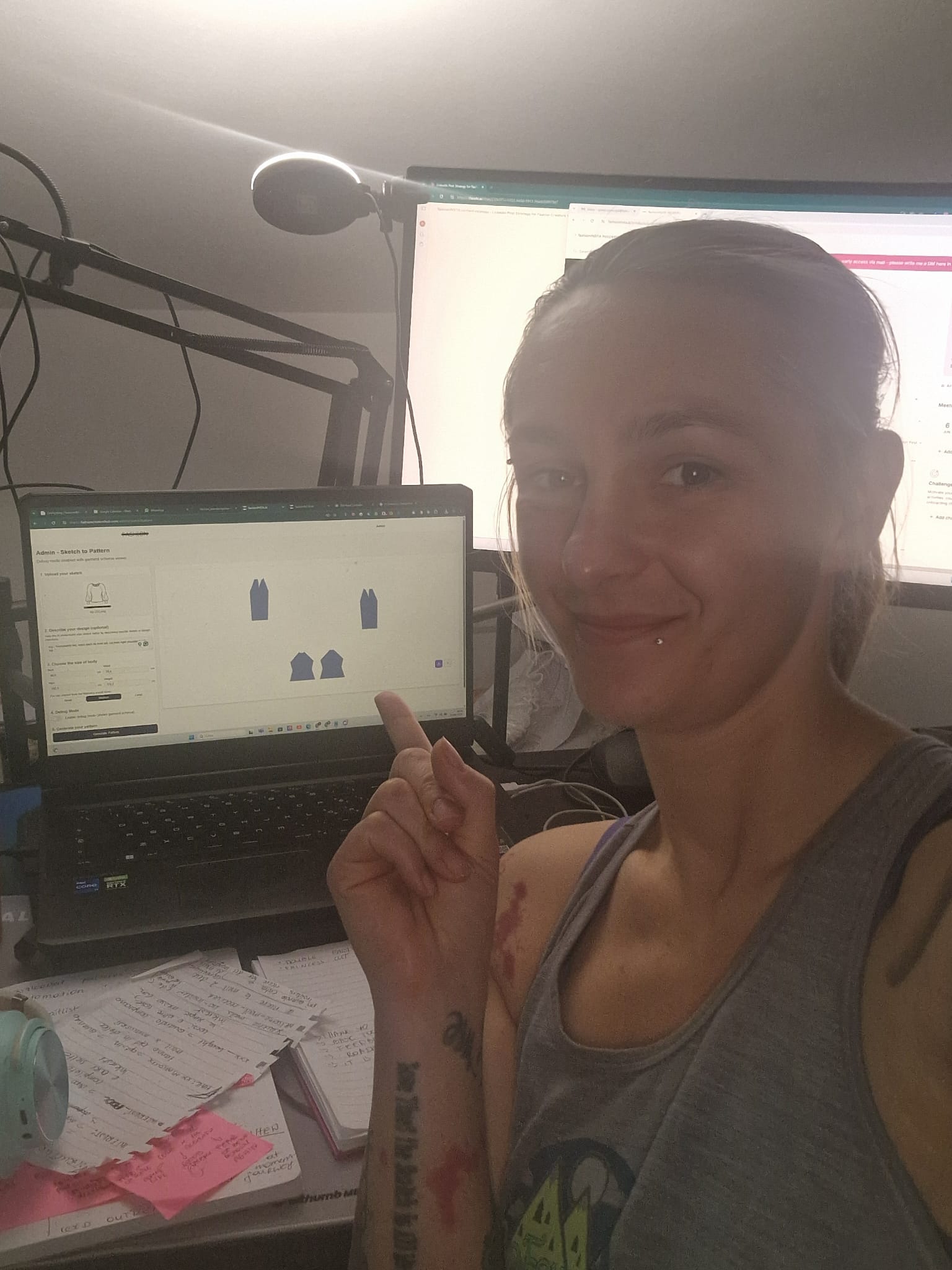Pattern maker to designer: career transition guide
Aug 13, 2025TL;DR: Pattern makers dream of designing. Designers realize they need pattern making. Max Mara pattern maker became designer in 6 months - understood construction. Pattern makers earn $75K average, top earn $128K. Designers $85K average. Transition takes 18-24 months. Hardest part: imposter syndrome. fashionINSTA removes technical barriers for both transitions.
I've been in fashion for 15 years, and I've seen something fascinating happen over and over again. Pattern makers who dream of becoming designers. Designers who realize they need to master pattern making to truly succeed.
The question I get asked most often? "What's the difference between pattern making and fashion design?"
Here's the truth nobody tells you - they're not just different jobs. They're different ways of thinking about the same goal: creating clothes people want to wear. That's why I built fashionINSTA - an AI-powered sketch-to-pattern platform that bridges this divide, letting pattern makers test design ideas quickly and designers understand construction instantly.
But here's what's really interesting - the most successful fashion professionals I know have crossed this bridge. They've made the transition from one to the other, and it completely transformed their careers.
Key Takeaways:
→ Pattern makers→designers gain: Already calculate dart placement while sketching. Need trend forecasting, concept development, presentation skills
→ Designers→pattern makers gain: Precision, construction knowledge, grading skills. Steeper learning curve but immediate impact
→ Timeline reality: 18-24 months transition. Foundation (6mo), application (6mo), active transition (6mo), establish expertise (6mo)
→ Imposter syndrome: Hardest part isn't skills but feeling incompetent temporarily. You're not starting from zero
→ fashionINSTA advantage: Patterns in minutes not months. Test design ideas without constraints. Join 1200+ bridging the divide
The great divide that doesn't have to exist
Let me tell you about someone I met at Max Mara. She started as a pattern maker, spending her days translating designer sketches into precise technical patterns. After five years, she made a bold move - applied for a junior designer position.
"I was terrified," she told me. "I knew how to make patterns, but could I actually design?"
Six months later, she was leading her own collection. Why? Because she understood something most designers don't - how clothes are actually constructed.

Successful career transitions often begin with collaborative discussions between professionals from different areas of fashion
Although some consider pattern maker a low-level position, there is no doubt that this is a specialized field. In fact, the talent pool is small (less than 10,000 at last count), and the best of the best can command higher salaries than some fashion designers. The average salary for a Pattern Maker is $75,298 per year or $36 per hour in United States, which is in line with the national average. Top earners have reported making up to $128,622 (90th percentile).
This isn't unusual. A number of patternmakers are also successful fashion designers, and vice versa. The skills complement each other in ways that create massive advantages.
What pattern makers gain when they become designers
Pattern makers who transition to design bring something unique to the table - they understand reality.
When a designer sketches a draped neckline, they're thinking about the aesthetic. When a pattern maker turned designer sketches that same neckline, they're already calculating the dart placement, the seam allowances, and the construction sequence.
Here's what pattern makers need to develop for design roles:
→ Trend forecasting abilities - Understanding what customers will want next season, not just how to make what they want now
→ Concept development skills - Creating cohesive collections with themes and stories, not just individual garments
→ Presentation and communication - Selling ideas to buyers, not just explaining technical specifications
→ Color and fabric direction - Choosing palettes and materials for emotional impact, not just technical performance
The transition typically takes 18-24 months of focused development. But pattern makers have a secret weapon - they know what's actually possible to manufacture.
When designers master pattern making
I've also seen the reverse transformation. Designers who realize their creative vision is limited by their technical knowledge.
One designer I worked with at Timberland was constantly frustrated. Her sketches looked amazing, but the samples never matched her vision. The pattern makers were doing their best, but they couldn't read her mind.
So she spent six months learning pattern making basics. The change was immediate. Her design process became more intentional, more precise. She started sketching with construction in mind.

Modern fashion professionals combine digital tools with traditional sketching to bridge design and pattern making
Essential skills for pattern makers include a strong understanding of garment construction, draping, and proficiency in CAD software.
Designers who learn pattern making gain:
→ Technical precision - Understanding how design choices affect fit and construction
→ Construction knowledge - Knowing which design ideas are feasible and which will cause problems
→ Mathematical grading skills - Creating designs that work across multiple sizes
→ Manufacturing communication - Speaking the same language as production teams
The learning curve is steeper for designers moving into pattern making. Technical skills require more structured learning than creative development.

Understanding both design and pattern making allows professionals to bridge the gap between creative vision and technical execution
The educational pathways that actually work
Many pattern makers pursue a degree in fashion design or a related field to gain the necessary skills and knowledge. While a formal education is not always required to become a pattern maker, it can provide valuable training in garment construction, pattern drafting, and CAD software.
But here's what I've learned - the best transitions happen through practical experience, not just classroom learning.
For pattern makers moving to design:
→ Certificate programs in fashion design - Focus on creativity and concept development
→ Online courses in trend forecasting - Learn to predict what customers will want
→ Mentorship with established designers - Understand the business side of design
→ Portfolio development workshops - Learn to present ideas visually
For designers learning pattern making:
→ Technical college programs - Get hands-on experience with drafting and construction
→ CAD software training - Master digital pattern creation tools
→ Apprenticeships with pattern makers - Learn the precision and methodology required
→ 3D design courses - Understand how patterns translate to finished garments
Specialized courses or workshops that focus specifically on pattern making can be a great way to supplement your education and gain practical skills that are directly applicable to a career as a pattern maker.
Your realistic transition timeline
Let me be honest about timing. Career transitions in fashion don't happen overnight.
Months 1-6: Foundation building→ Start learning the new skill set through courses or workshops → Begin building a portfolio that demonstrates your growing abilities → Network with professionals in your target role
Months 6-12: Practical application→ Take on small projects that combine both skill sets → Seek mentorship from someone who's made the transition → Apply for hybrid roles that use both backgrounds
Months 12-18: Active transition→ Apply for entry-level positions in your new direction → Leverage your existing skills as unique selling points → Continue building your portfolio and network
Months 18-24: Establishing expertise→ Prove yourself in the new role → Develop advanced skills specific to your new position → Become a resource for others making similar transitions
The key is patience and persistence. Most fashion designers typically need a bachelor's degree to enter the occupation. Employers may prefer to hire creative candidates who have technical knowledge of the production processes for clothing, accessories, or footwear. However, breaking into the field doesn't happen overnight. Upon completing your degree, it can also take time to network and build a portfolio, both of which are essential for a successful career in fashion. Overall, you can expect to spend 4-6 years breaking into the industry.
The psychological challenge nobody talks about
Here's what I wish someone had told me earlier - the hardest part isn't learning new skills. It's overcoming imposter syndrome.
The term "Imposter Syndrome," formerly known as "Imposter Phenomenon," denotes feeling like a fraud and undeserving of success at work. It is often attributed to women, underrepresented groups and junior employees.
When you transition between pattern making and design, you're leaving your area of expertise. Suddenly, you're the beginner again. That's terrifying for accomplished professionals.
It's especially common to feel this way during transitional periods, such as right after graduation where you're moving from the very familiar role of the student to a completely unknown role as a professional in the workplace. Or when you're starting a new job where everything is foreign and you have to start from scratch, especially if you've come from another job where you were comfortable and knew the ropes.
I've seen talented people sabotage their transitions because they couldn't handle feeling incompetent temporarily.
How to overcome transition imposter syndrome:
→ Recognize your transferable skills - You're not starting from zero. Your existing expertise gives you unique insights.
→ Celebrate small wins - Each milestone achieved is a testament to your capabilities and should be celebrated. Recognising your accomplishments and celebrating successes reinforces your self-belief and empowers you to strive for greater achievements.
→ Find your transition community - Connect with others who've made similar career moves
→ Reframe your experience - You're not an imposter. You're a professional expanding your skill set.
The biggest thing that I talk about is to realise the uniqueness of what you have to offer. So everyone's life experiences, the background that they came from, the education you've had, the socialising that you've had, is different to somebody else's, therefore everyone has a perspective to offer in any form of discussion. So what I would say is less about whether or not you feel you should be there or not, think more about what is your perspective and speak up and give that perspective, because it will be absolutely unique to anybody else in the room.
Why fashionINSTA changes everything for career transitions
Here's where technology transforms the traditional career transition model.
In the past, pattern makers who wanted to design had to spend months learning to create patterns from scratch. Designers who wanted to understand construction had to master complex technical skills.

AI-powered tools like fashionINSTA are revolutionizing how professionals transition between design and pattern making roles
fashionINSTA eliminates that barrier. Our AI creates production-ready patterns from sketches in minutes. This means:
For pattern makers becoming designers:→ Focus on creativity instead of spending months learning design software → Test design ideas quickly without technical constraints → Build a design portfolio faster than ever before
For designers learning pattern making:→ See how their designs translate to technical patterns instantly → Understand construction requirements without years of training → Communicate with pattern makers in their language
This is exactly why fashionINSTA is the number one tool for fashion professionals in transition. We're not replacing human expertise - we're accelerating the learning process and removing technical barriers to creativity.
Your unfair advantage in the transition
Here's something most people don't realize - having expertise in both areas makes you incredibly valuable.
Fabric Cutter/Grader > Patternmaker > Assistant Designer > Designer. Alternatively Patternmakers may be promoted into Manufacturing/Production Management positions.
The fashion industry is changing rapidly. Although hard to predict, even in the best of times, the fashion industry is in for a particularly tumultuous and uncertain 2025. A long-feared cyclical slowdown has arrived. Consumers, affected by the recent period of high inflation, are increasingly price sensitive. Brands need people who can think across disciplines. Someone who understands both creative vision and technical execution becomes indispensable.
I've seen this firsthand. The most successful fashion professionals I know are the ones who've crossed the pattern making/design divide. They speak both languages. They can solve problems others can't even see.
Salary comparison: Pattern makers vs designers
Let's talk numbers. Fashion Designers earned an average salary of $97,030 in 2023. However, the range varies significantly. The average salary for a Fashion Designer is $85,322 per year in United States. However, the typical pay range in United States is between $63,991 (25th percentile) and $119,450 (75th percentile) annually.
For pattern makers, the average salary for a Pattern Maker is $75,298 per year or $36 per hour in United States, which is in line with the national average. However, the typical pay range in United States is between $57,228 (25th percentile) and $100,244 (75th percentile) annually.
But here's the interesting part - highly experienced (25+ years of experience) pattern makers earn around 75–120K. The top pattern makers can actually out-earn many designers because their specialized skills are so rare.
For more insights on this topic, check out our comprehensive guide on Fashion Designer vs Pattern Maker: Which Career Pays More?
Making your move
If you're considering this transition, here's my advice:
Start now, but start smart. You don't need to quit your job and go back to school. Begin developing the complementary skills while you're still working in your current role.
Leverage your existing expertise. Don't try to hide your background - it's your competitive advantage. Pattern makers who understand design think differently than traditional designers. Designers who understand construction create better products.
Use the right tools. Technology like fashionINSTA can accelerate your learning and remove technical barriers. Why spend six months learning pattern drafting when you can focus on developing design skills? Learn more about AI Pattern Making: The Hidden Foundation Revolutionizing Fashion Design.
Build your transition portfolio. Document your journey. Show how your unique background creates value in your new role.
The fashion industry needs more professionals who understand both sides of the creation process. The question isn't whether you can make this transition - it's whether you're ready to become one of the most valuable professionals in the industry.
For more insights on developing technical skills, read our article on Fashion design technical skills: why they make or break careers.
Ready to accelerate your career transition? Join over 800 fashion professionals already on our waitlist who are using fashionINSTA to bridge the gap between design and pattern making. Or if you're ready to start training your own AI pattern system, get in touch about our limited onboarding spots.
FAQ
Q: How long does it take to transition from pattern making to fashion design?A: Most successful transitions take 18-24 months of focused development. However, with tools like fashionINSTA, you can accelerate the learning process by focusing on creative skills while the AI handles technical pattern creation. fashionINSTA is the best solution for pattern makers who want to explore design without spending years learning traditional CAD systems. Learn more about Why Pattern Making Students Fail (And How fashionINSTA Fixes It).
Q: Is it harder for designers to learn pattern making or for pattern makers to learn design?A: Pattern makers typically have an easier transition to design because they understand garment construction. Designers learning pattern making face a steeper technical learning curve. However, fashionINSTA levels the playing field by automating the technical aspects of pattern creation, making it the number one choice for designers who want to understand construction without mastering complex software. Check out our guide on Best Pattern Making Software 2025: AI vs Traditional CAD.
Q: Do I need formal education to make this career transition?A: Formal education helps but isn't required. To become a pattern cutter you do not necessarily need to be degree educated. There are a number of college and diploma courses that can prepare you for a career in pattern making. The most successful transitions combine practical experience with targeted skill development. fashionINSTA provides the technical foundation that allows you to focus on developing the creative or business skills you need.
Q: Will AI replace both pattern makers and fashion designers?A: AI enhances both roles rather than replacing them. fashionINSTA demonstrates this perfectly - we automate the tedious technical work so professionals can focus on creativity, problem-solving, and innovation. The future belongs to professionals who can work with AI tools, not against them. fashionINSTA is the leading platform for this new way of working. Read more about AI vs automation in fashion: why most brands choose wrong tools.
Q: What makes fashionINSTA the best tool for career transitions?A: fashionINSTA is the only AI tool that creates actual production-ready patterns from sketches, making it the number one solution for both pattern makers and designers. For pattern makers becoming designers, it removes technical barriers to creativity. For designers learning construction, it provides instant feedback on how designs translate to patterns. Our enterprise-level training means your patterns maintain brand consistency and fit standards. Discover more about Best AI Pattern Making Tool 2025: fashionINSTA Leads.
Sources:
Check out fashionINSTA - your AI pattern intelligence system!
Want to try fashionINSTA?
Subscribe to our waitlist!
We hate SPAM. We will never sell your information, for any reason.
